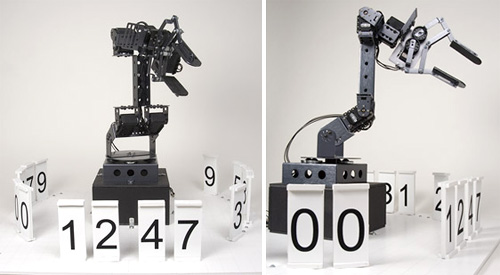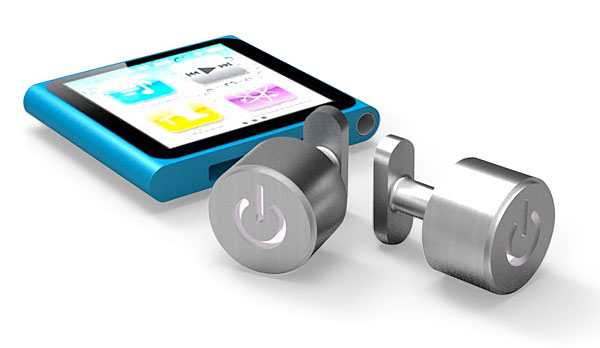
By Andrew Liszewski
On the weekend I wrote about the RoboStool which is arguably one of Steve Norris’ more useful robotic creations. Particularly when you compare it to the Stonehenge Robotic Digital Clock which uses a simple robot arm to re-arrange a set of 14 numbered cards that indicate the current time. The name ‘Stonehenge’ comes from the fact that the cards are arranged in a semi-circle around the arm so that the software can easily keep track of where they are. The cards are made from simple foam-core but also feature a set of neodymium magnets on the bottom that stick to metal screws around the base. This ensures the cards are always put back in the exact same position, compensating for any small errors as they’re moved around.
It’s a clever idea and all, except for the fact that it takes the arm almost 50 seconds to change the display from 12:09 to 12:10 in the video below. I imagine if the setup incorporated a more advanced/considerably faster arm the clock would be more practical, though I assume you could also compensate for how long it takes to move around when it comes to calculating what time it should display. But as it stands now, it’s not the kind of thing you’d want to rely on in the morning if you’re always late for work.





Thats just awesome, i would buy one in a hardbeat! i wish i could program my red5 robot arm could be programmed to do something like this
Cool!